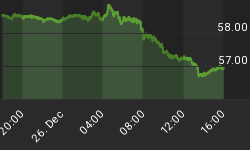Foreigners were net sellers of US long term securities in September at $14.7b after $150.7b in net selling in August. But foreign net long-term purchases showed a rebound to net buying of $26.4 bln after a net selling of $70.6 bln in August, which was the first net negative figure since August 1998, a month characterized by sharp declines in US stocks and treasuries when markets plunged following the LTCM collapse and Russia 's decision to drop its currency peg.
US equities received $2.5 bln in net buying after sustaining the biggest net selling in history in August at $40.7 bln. The rebound in net purchases of US corporates and Agencies did help the overall balance.
Japanese and Chinese Treasury holdings continued on the decline, as Japanese holdings reach $582 billion, the fourth consecutive monthly decline, and a 17% decline off the all time high reached in 2004. Chinese holdings reached $396 billion, extending their decline from the April high. While the impact of the dollar decline on reducing the value of these holdings is largely considered, it does not mitigate from the fact that net buying is being reduced. Case in point, the dollar has gained 22% against the yen since the peak in Japanese holdings of December 2004while these holdings have continued on the decline ever since.
The other side of the equation in the TICS story is becoming increasingly influential in determining the net figures, namely, US resident's flows in foreign assets. US resident's increased their net purchases of foreign stocks and bonds, bringing the total net outflow to $28.9 billion in September, the fifth highest figure on record. The fact that the 4 highest net outflows were all registered in 20007 reflects the increased interest in investing in non US stocks as well as US retail investors' awareness of the falling dollar.


Looking forward, the October and November TICS figures are expected to be similarly worrying considering the ominous combination of persistent deterioration in the dollar during those months as well as the ongoing pressure on equities, the main destination of foreign capital.
The unexpected 0.5% decline in October industrial production and the decline in capacity utilization to 81.7 from 82.2 is a rude awakening for the Federal Reserve especially as the report spanned a broad decline, from mining to factory output. With the steepening of the US yield curve at its highest since Match 2005, we expect further widening of the 10-2 year spread to come in line with further Fed cuts, placing our Fed funds target at 3.75% by end of Q2 2008.
















